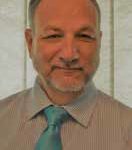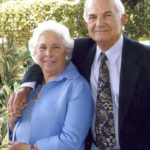GETTING THE MOST ENERGY For your Excercise

by Paula Allia
PT, DHSc, MTC, OCS
The studies of muscles and having the energy to perform the activities that you desire, are constantly being studied. Where does the energy come from that is needed to perform efficiently? What can you do to effect change and get the energy that you want?
First, understand that there are both aerobic and anaerobic metabolisms. Secondly, the body
produces ATP within cells to give you the energy to perform and that energy has to be produced
somewhere. Finally, besides getting appropriate sleep and eating healthily (including or not
including supplements), how can you enhance the body to give you the energy to perform and
to live longer? Muscles have different types of fibers. There are types Ia, IIa, and IIb fibers. Slow
twitch muscle fibers (type lA) are red in color and work in an oxidative way, utilizing oxygen to create energy.
They like to use fat as fuel and they can be most efficient. Though the contraction rate of slow-twitch fibers is
indeed slower, endurance is highest when compared to other fibers. Type IIa are fasttwitch muscles fibers can also be oxidative, and the type IIb fiber is more glycolytic and uses mostly carbohydrates with some amino acids
(proteins) for fuel in an anaerobic manner (without oxygen). Fast-twitch fibers provide quick bursts of muscular strength and power, but fatigue more quickly.
Many activities use a combination of these fibers to work together to provide the appropriate muscular function and thus success in that exercise or activity. Proper training allows the body to react to the stresses placed upon it. The body, with or without oxygen, produces energy in the mitochondria at the cellular level. The mitochondria is known as the powerhouse of the cell. Consider it like the power plant of a building: if the power plant is
down, the building does not run. Thus, keeping the mitochondria active and functioning is key to running an efficient body. It is within this mitochondria the ATP is created. Every muscle cell, every crosslink and cross-bridge in a shortening muscle contraction utilizes ATP.
It is important to have as many healthy mitochondria as possible to share the workload that we place on the body. As one ages, mitochondria can become inactive and then die if it is not used. Research is constantly being done to see what the best way is to stimulate mitochondria. There are more mitochondria in slow-twitch muscle fibers
versus fast twitch. The more mitochondria in a cell, the better the cell can produce energy for utilization for various body physiology inclusive of muscular contractions and exercise.
Keeping the mitochondria healthy in the body is a key component to success in efficient muscle contractions. The more healthy mitochondria in a cell, the more they all work together and cover the work load for muscle
contractions on the body. These mitochondria can become sick, muted and even die without the right stimulus and nutrients. Muscle fibers contain the most mitochondria as compared to any other cells in the body. Slow-twitch carry the most, IIa next and IIb the least. Mitochondria contain DNA and have the ability to create more
mitochondria as the body adapts to the stresses placed upon it. Interval training and various methods of training are still being studied to see how they can affect the multiplication of these powerhouses. Not only does one want
to stimulate more slow-twitch fibers but also fast-twitch. The more operating mitochondria the better!
Even with type II diabetes, muscle fatigue may be related to decreased mitochondria and this may be related to insulin resistance as well. There is so much to study, but most important, we know that exercise, participation in aerobic activities and interval training can affect the mitochondria numbers and effect a positive change with effort and participation. If you have lost some energy, proper stimulation can provide the stimulus you need. Help yourself live with better energy and stamina.
To Your Health!
Fitness Together
335 14th Ave South
Naples, FL 34102
239.263.9348
FitnessTogether.com/Naples



Leave a Reply
Want to join the discussion?Feel free to contribute!